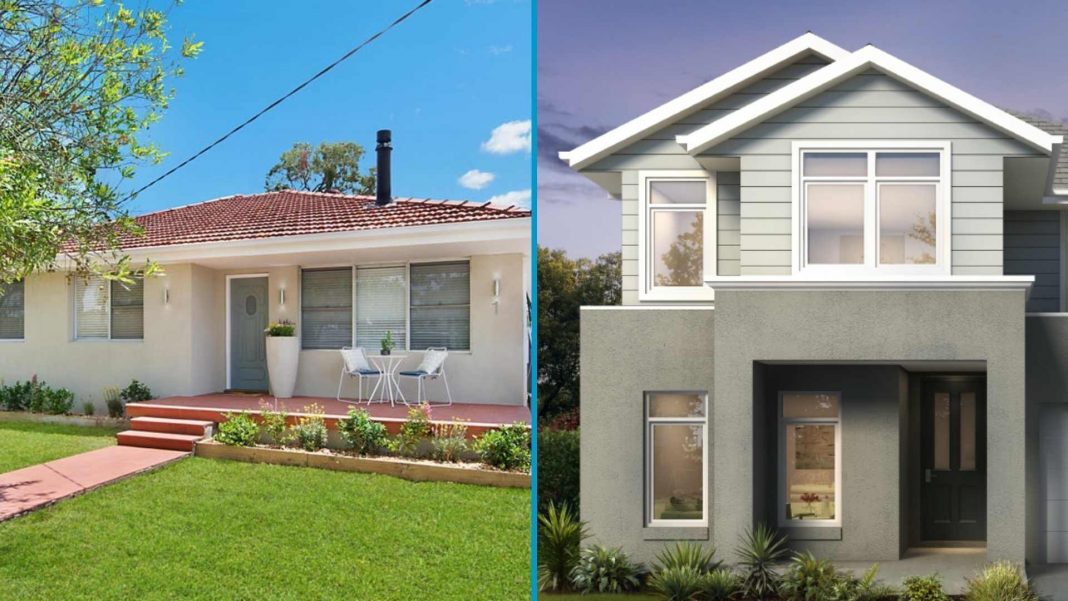Congratulations. You’re ready to make your property purchase. So what’s it going to be – an existing property or will you buy new? If you’re focused on a new property, are you buying off the plan, a house and land package, or just recently built? Lucky you . .so many options.
The ‘existing v new’ issue is one of the key decisions we help our clients make, and there’s a few aspects to consider before you can settle on a choice.
Positives and negatives
Outlined below is a summary of the positives and negatives for both cases.
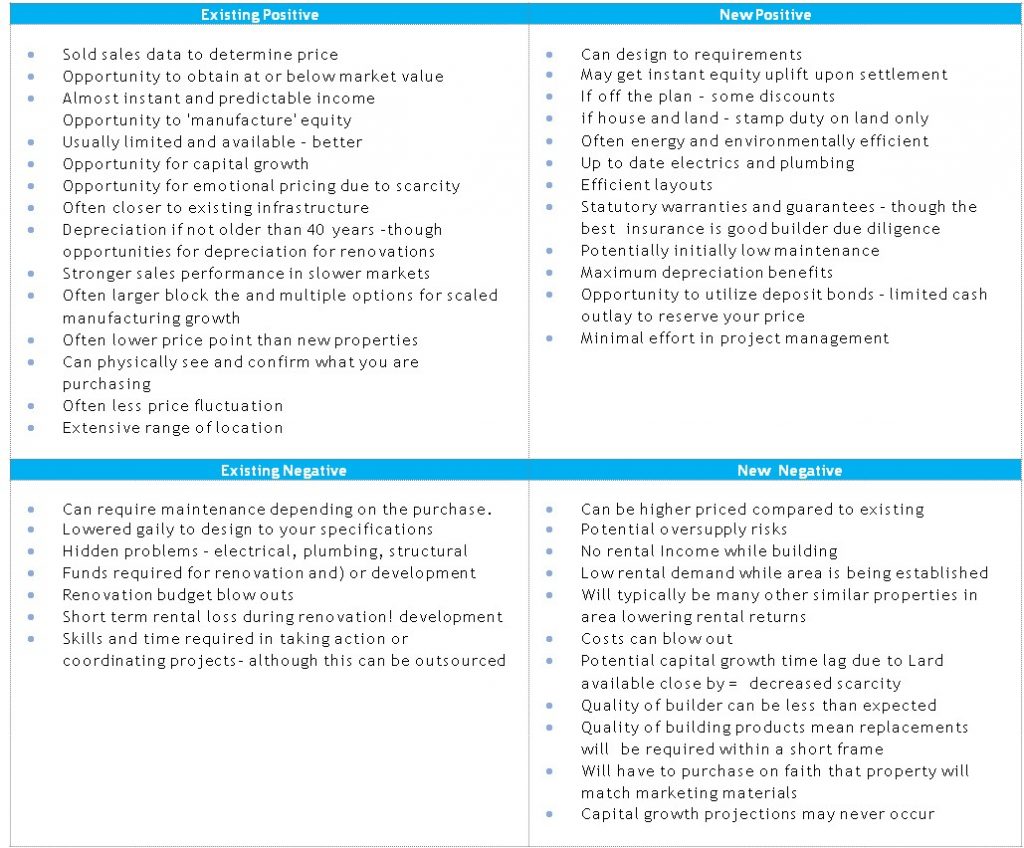
Depreciation
If you’re purchasing an investment property, one of the key issues many people consider in relation to the ‘existing v new’ argument is depreciation. Depreciation is the amount an investor can deduct from their income to determine their total taxable income. Many new investors get suckered into purchasing new property by bad advisers who spruik the benefits of depreciation. Ultimate caution should be used if depreciation is the only reason for the purchase, as all depreciation benefits are required to be repaid when the property is sold – and you’ll never hear this advice during the purchase process.
Like anything relating to finances and taxation, the issue is complex and will be tied to your personal situation as well as the specifics of each property. However, for the purposes of weighing up the benefits of ‘existing v new’ properties, the following basic example highlights some key aspects.
There are two main classes of depreciation – Division 43 (relates to building costs), and Division 40 (relates to fixtures and fittings). New property can qualify for depreciation of the building costs over a 40 year period, with higher amounts depreciated in the first few years. This is demonstrated in the example below by comparing an existing property without building depreciation, against a new property that qualifies for depreciation.
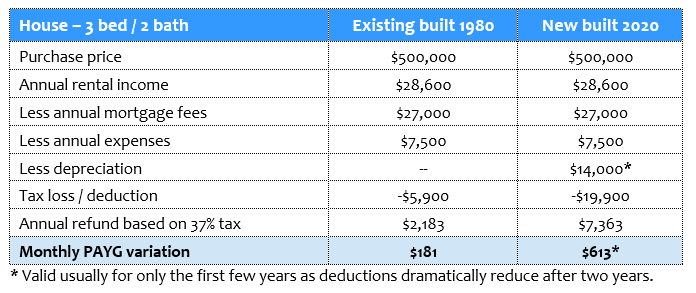
Of course, comparisons like the one above leaves out the fact that you can depreciate fixtures, fittings and renovations including renovations made by previous owners. This means older properties can be depreciated, and can include items ‘scrapped’ during renovation.
Important differences
In the majority of cases, new property – no matter how much depreciation can be loaded into the ‘deal’ – will never be able to deliver the range of outcomes you can achieve with a good ‘established’ property purchase.
This is because an established property will usually have a lower purchase price (when compared with a new property), bigger block size, along with potential to freshen up / renovate / add granny flat / develop.
Established properties will be located near established infrastructure such as transport, shopping centres, schools and sporting centres, while new property will typically be located on the outskirts of cities far from shops and entertainment.
Crucially, you will be able to walk through an established property as opposed to looking at a model home – which will often include all the expensive upgrades – or looking at plans, and you will be able to rent out an established property immediately rather than waiting months for the property to be built.
Grants and exemptions
A key attraction with new property is the range of Federal and State grants and stamp duty exemptions on offer. In addition, in new estates builders need to compete to attract buyers and will often include purchase packages to sweeten the deal.
This leads many buyers to be trapped by the heavy marketing of new property resulting in purchases that will never deliver on the marketers’ promises. Even worse, many property prices have been inflated to match the grants and exemptions, so the benefits fall into everyone else’s pocket but yours.
In order to ensure you’re not over-paying for a property, compare any purchases on offer using the nett price method. This involves deleting the total amount of grants and exemptions from the asking price. For example, where grants and exemptions total $40,000, deleted from an asking price of $700,000 means the real price is $660,000.
Conduct comparisons
Using the nett price method will help you compare the real price against properties where the grants don’t apply. For example, you may be able to purchase a good quality existing property in a well located suburb for $650,000. The grants may not apply, but you won’t need as much of a deposit and the stamp duty exemptions may still be achieved.
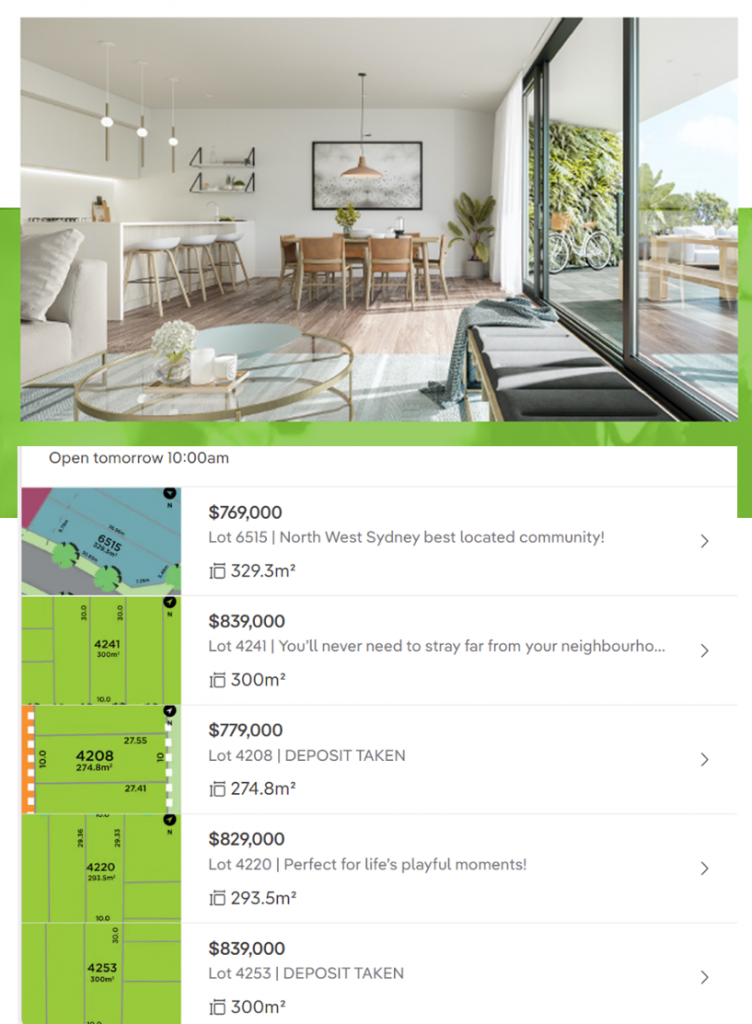
By way of example, the advert above is selling apartments in a development located in a new outer suburb of Sydney. Note they haven’t included the strata fees or other ongoing costs of the apartments but the apartments are priced from $650,000 for a one bedroom through to more than $1,000,000 for 3 bedrooms. And . . remember that apartments have extremely limited opportunity to add value or attract a higher price for rental over the other properties in the same complex.
Also the prices listed of $769,000 to $839,000 just for land will be enough to purchase a house in a range of established suburbs closer to transport, shops and other amenities. Further benefits include good capital growth, numerous opportunities to add value, along with immediate rental returns.
If you’re still trying to decide between existing or new properties, use the decision tool below for further insights.
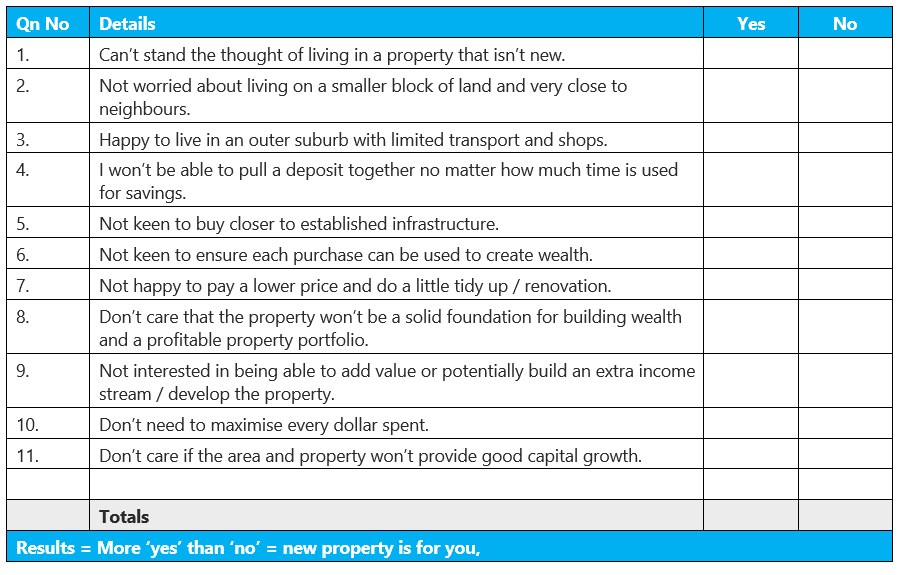
Key facts
Fact = New properties quickly drop in value because they lose their key feature of being ‘new’ as soon as they are purchased. In this way, new property works in the same way as a new car – it loses a large amount of value as soon as it purchased.
Fact = New properties are usually built amidst hundreds of other new properties so it’s actually harder to achieve a price increase. Capital growth will be non-existent if a property is located in a new area surrounded by.lots of greenfield space or acreage that is planned for development. This is because more ‘stock’ / other properties will mean more property is available. Good capital growth is achieved in established areas where there is limited supply of properties available to purchase or rent.
Fact = Poor standards of building quality means new properties are currently deteriorating at a greater pace than established properties. This is not only due to the quality of the builder, but also the quality of the building materials used.
Fact = Critically for investment properties, established properties can be rented out immediately and are better located which means investors can start making money immediately upon settlement. New properties will often need 9 – 12 months to be built and by then investors will have more rental competition as they’re competing with other new builds.
The truth
The truth is that your choice between existing or new property will depend on what you need in your next purchase, as well as what suits your interests, budget, style and skills. Can you afford a new property, or is your budget better suited to an existing property with existing tenants? Do you want to design your own home, rather than re-model an existing property?
If you aren’t sure what works best for you, we’re happy to discuss the possibilities. After your preferences are clear, this should clarify the best location for you. In this way, you will be the master of your own selections instead of what someone else wants to sell you.
About the author
Debra Beck-Mewing is the Editor of the Property Portfolio Magazine and CEO of The Property Frontline. She has more than 20 years’ experience in buying property Australia-wide and has extensive experience in helping buyers use a range of strategies including renovating, granny flats, sub-division and development. Debra is a skilled property strategist, and a master in identifying tailored opportunities, homes and sourcing properties that have multiple uses. She is a Qualified Property Investment Advisor, licensed real estate agent and also holds a Bachelor of Commerce and Master of Business. As a passionate advocate for increasing transparency in the property and wealth industries, Debra is a popular speaker on these topics. She is also an author, podcast host, and participates on numerous committees including the Property Owners’ Association.
Follow us on facebook.com/ThePropertyFrontline for regular updates, or book in for a strategy session to discuss your property questions.
Disclaimer – This information is of a general nature only and does not constitute professional advice. We strongly recommend you seek your own professional advice in relation to your particular circumstances.
